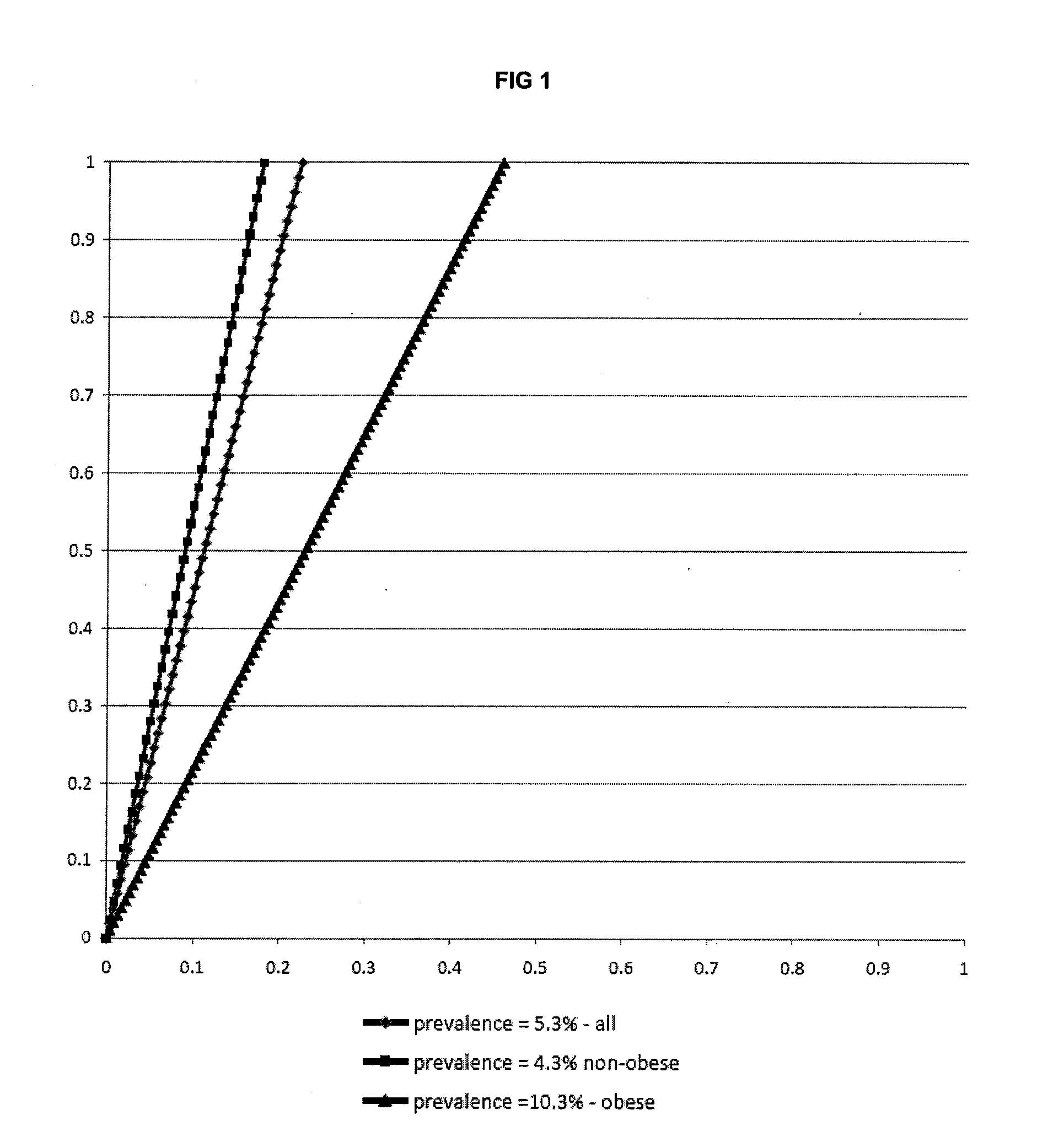Biomarkers and parameters for hypertensive disorders of pregnancy
a technology of hypertension and biomarkers, applied in the field of biomarkers and parameters for hypertension disorders of pregnancy, can solve the problems of increased perinatal mortality, severe pe, morbidity and mortality
- Summary
- Abstract
- Description
- Claims
- Application Information
AI Technical Summary
Benefits of technology
Problems solved by technology
Method used
Image
Examples
example 1
Test Panels for HDP / PE Prediction
[0255]Prospective clinical samples were collected from pregnant women with a singleton pregnancy at 15+ / −1 and 20+ / −1 weeks' gestation and which were either diagnosed with pre-eclampsia (cases) or not diagnosed with pre-eclampsia (controls) in the further course of their pregnancy. All samples were obtained from participants in the SCOPE study (SCreening fOr Pregnancy Endpoints), Australian Clinical Trials Registry ACTRN12607000551493, a prospective screening study of nulliparous women. Written consent was obtained from each participant. The inclusion criteria applied for the study were nulliparity, singleton pregnancy, gestation age between 14 weeks 0 days and 16 weeks 6 days gestation and informed consent to participate. The exclusion criteria applied were: Unsure of last menstrual period (LMP) and unwilling to have ultrasound scan at =3 miscarriages, >=3 terminations, major fetal anomaly / abnormal karyotype, essential hypertension treated pre-pregn...
example 2
MASSterclass® Targeted Protein Quantification
[0267]The following describes one exemplary and preferred way of targeted protein quantification in samples, particularly as also used in and throughout the present examples.
MASSterclass Experimental Setup
[0268]MASSterclass® assays use targeted tandem mass spectrometry with stable isotope dilution as an end-stage peptide quantitation system (also called Multiple Reaction Monitoring (MRM) and Single Reaction Monitoring (SRM)). The targeted peptide is specific (i.e., proteotypic) for the specific protein of interest. i.e., the amount of peptide measured is directly related to the amount of protein in the original sample. To reach the specificity and sensitivity needed for biomarker quantitation in complex samples, peptide fractionations precede the end-stage quantitation step.
[0269]For the proteins cited, the panel building was based on the relative readouts of proteotypic peptides listed below as quantified in MASSterclass. For PRDX1 two d...
example 3
[0296]Logistic regression was used to define multivariate classifier models (test panels) that predict the outcome (pre-eclampsia / no pre-eclampsia) [Royston et al. 2009, Prognosis and prognostic research: Developing a prognostic model, BMJ 2009: 338:b604].
[0297]The predictors (biomarkers and parameters) were normalised. The binary variables were coded 0 / 1, the analyte concentrations and relative concentrations (MasterClass measurements) were log-transformed. For feature selection, all parameters were normalised (Z-normalisation).
[0298]Feature selection was performed using the shrinkage and selection method Lasso (Tibshirani 1996, Regression shrinkage and selection via the lasso, J. Royal. Statist. Soc B. 58(1): 267-288). The performance of the models (test panels) was estimated using the apparent area under the receiver-operating curve (AUC). The prediction error for the classifiers was estimated using cross-validation. The classifiers were ranked based on their ...
PUM
| Property | Measurement | Unit |
|---|---|---|
| Time | aaaaa | aaaaa |
| Time | aaaaa | aaaaa |
| Time | aaaaa | aaaaa |
Abstract
Description
Claims
Application Information
 Login to View More
Login to View More - R&D
- Intellectual Property
- Life Sciences
- Materials
- Tech Scout
- Unparalleled Data Quality
- Higher Quality Content
- 60% Fewer Hallucinations
Browse by: Latest US Patents, China's latest patents, Technical Efficacy Thesaurus, Application Domain, Technology Topic, Popular Technical Reports.
© 2025 PatSnap. All rights reserved.Legal|Privacy policy|Modern Slavery Act Transparency Statement|Sitemap|About US| Contact US: help@patsnap.com

